- Home
- H. P. Lovecraft
The Shunned House
The Shunned House Read online
Produced by Greg Weeks, Stephen Blundell and the OnlineDistributed Proofreading Team at https://www.pgdp.net
The Shunned House
By H. P. LOVECRAFT
_A posthumous story of immense power, written by a master of weird fiction--a tale of a revolting horror in the cellar of an old house in New England_
Howard Phillips Lovecraft died last March, at the height of his career. Though only forty-six years of age, he had built up an international reputation by the artistry and impeccable literary craftsmanship of his weird tales; and he was regarded on both sides of the Atlantic as probably the greatest contemporary master of weird fiction. His ability to create and sustain a mood of brooding dread and unnamable horror is nowhere better shown than in the posthumous tale presented here: "The Shunned House."
From even the greatest of horrors irony is seldom absent. Sometimes itenters directly into the composition of the events, while sometimes itrelates only to their fortuitous position among persons and places. Thelatter sort is splendidly exemplified by a case in the ancient city ofProvidence, where in the late forties Edgar Allan Poe used to sojournoften during his unsuccessful wooing of the gifted poetess, Mrs.Whitman. Poe generally stopped at the Mansion House in BenefitStreet--the renamed Golden Ball Inn whose roof has sheltered Washington,Jefferson, and Lafayette--and his favorite walk led northward along thesame street to Mrs. Whitman's home and the neighboring hillsidechurchyard of St. John's, whose hidden expanse of Eighteenth Centurygravestones had for him a peculiar fascination.
Now the irony is this. In this walk, so many times repeated, the world'sgreatest master of the terrible and the bizarre was obliged to pass aparticular house on the eastern side of the street; a dingy, antiquatedstructure perched on the abruptly rising side hill, with a great unkemptyard dating from a time when the region was partly open country. It doesnot appear that he ever wrote or spoke of it, nor is there any evidencethat he even noticed it. And yet that house, to the two persons inpossession of certain information, equals or outranks in horror thewildest fantasy of the genius who so often passed it unknowingly, andstands starkly leering as a symbol of all that is unutterably hideous.
The house was--and for that matter still is--of a kind to attract theattention of the curious. Originally a farm or semi-farm building, itfollowed the average New England colonial lines of the middle EighteenthCentury--the prosperous peaked-roof sort, with two stories anddormerless attic, and with the Georgian doorway and interior panellingdictated by the progress of taste at that time. It faced south, with onegable end buried to the lower windows in the eastward rising hill, andthe other exposed to the foundations toward the street. Itsconstruction, over a century and a half ago, had followed the gradingand straightening of the road in that especial vicinity; for BenefitStreet--at first called Back Street--was laid out as a lane windingamongst the graveyards of the first settlers, and straightened only whenthe removal of the bodies to the North Burial Ground made it decentlypossible to cut through the old family plots.
At the start, the western wall had lain some twenty feet up aprecipitous lawn from the roadway; but a widening of the street at aboutthe time of the Revolution sheared off most of the intervening space,exposing the foundations so that a brick basement wall had to be made,giving the deep cellar a street frontage with door and one window aboveground, close to the new line of public travel. When the sidewalk waslaid out a century ago the last of the intervening space was removed;and Poe in his walks must have seen only a sheer ascent of dull graybrick flush with the sidewalk and surmounted at a height of ten feet bythe antique shingled bulk of the house proper.
"That awful door in Benefit Street which I had leftajar."]
The farm-like ground extended back very deeply up the hill, almost toWheaton Street. The space south of the house, abutting on BenefitStreet, was of course greatly above the existing sidewalk level, forminga terrace bounded by a high bank wall of damp, mossy stone pierced by asteep flight of narrow steps which led inward between canyon-likesurfaces to the upper region of mangy lawn, rheumy brick walks, andneglected gardens whose dismantled cement urns, rusted kettles fallenfrom tripods of knotty sticks, and similar paraphernalia set off theweather-beaten front door with its broken fanlight, rotting Ionicpilasters, and wormy triangular pediment.
* * * * *
What I heard in my youth about the shunned house was merely that peopledied there in alarmingly great numbers. That, I was told, was why theoriginal owners had moved out some twenty years after building theplace. It was plainly unhealthy, perhaps because of the dampness andfungous growths in the cellar, the general sickish smell, the drafts ofthe hallways, or the quality of the well and pump water. These thingswere bad enough, and these were all that gained belief among the personswhom I knew. Only the notebooks of my antiquarian uncle, Doctor ElihuWhipple, revealed to me at length the darker, vaguer surmises whichformed an undercurrent of folklore among old-time servants and humblefolk; surmises which never travelled far, and which were largelyforgotten when Providence grew to be a metropolis with a shifting modernpopulation.
The general fact is, that the house was never regarded by the solid partof the community as in any real sense "haunted." There were nowidespread tales of rattling chains, cold currents of air, extinguishedlights, or faces at the window. Extremists sometimes said the house was"unlucky," but that is as far as even they went. What was really beyonddispute is that a frightful proportion of persons died there; or moreaccurately, _had_ died there, since after some peculiar happenings oversixty years ago the building had become deserted through the sheerimpossibility of renting it. These persons were not all cut off suddenlyby any one cause; rather did it seem that their vitality was insidiouslysapped, so that each one died the sooner from whatever tendency toweakness he may have naturally had. And those who did not die displayedin varying degree a type of anemia or consumption, and sometimes adecline of the mental faculties, which spoke ill for the salubriousnessof the building. Neighboring houses, it must be added, seemed entirelyfree from the noxious quality.
This much I knew before my insistent questioning led my uncle to show methe notes which finally embarked us both on our hideous investigation.In my childhood the shunned house was vacant, with barren, gnarled andterrible old trees, long, queerly pale grass and nightmarishly misshapenweeds in the high terraced yard where birds never lingered. We boys usedto overrun the place, and I can still recall my youthful terror not onlyat the morbid strangeness of this sinister vegetation, but at theeldritch atmosphere and odor of the dilapidated house, whose unlockedfront door was often entered in quest of shudders. The small-panedwindows were largely broken, and a nameless air of desolation hung roundthe precarious panelling, shaky interior shutters, peeling wall-paper,falling plaster, rickety staircases, and such fragments of batteredfurniture as still remained. The dust and cobwebs added their touch ofthe fearful; and brave indeed was the boy who would voluntarily ascendthe ladder to the attic, a vast raftered length lighted only by smallblinking windows in the gable ends, and filled with a massed wreckageof chests, chairs, and spinning-wheels which infinite years of deposithad shrouded and festooned into monstrous and hellish shapes.
But after all, the attic was not the most terrible part of the house. Itwas the dank, humid cellar which somehow exerted the strongest repulsionon us, even though it was wholly above ground on the street side, withonly a thin door and window-pierced brick wall to separate it from thebusy sidewalk. We scarcely knew whether to haunt it in spectralfascination, or to shun it for the sake of our souls and our sanity. Forone thing, the bad odor of the house was strongest there; and fora
nother thing, we did not like the white fungous growths whichoccasionally sprang up in rainy summer weather from the hard earthfloor. Those fungi, grotesquely like the vegetation in the yard outside,were truly horrible in their outlines; detestable parodies of toadstoolsand Indian-pipes, whose like we had never seen in any other situation.They rotted quickly, and at one stage became slightly phosphorescent; sothat nocturnal passers-by sometimes spoke of witch-fires glowing behindthe broken panes of the fetor-spreading windows.
We never--even in our wildest Halloween moods--visited this cellarby night, but in some of our daytime visits could detect thephosphorescence, especially when the day was dark and wet. There wasalso a subtler thing we often thought we detected--a very strange thingwhich was, however, merely suggestive at most. I refer to a sort ofcloudy whitish pattern on the dirt floor--a vague, shifting deposit ofmold or niter which we sometimes thought we could trace amidst thesparse fungous growths near the huge

 The Best of H.P. Lovecraft
The Best of H.P. Lovecraft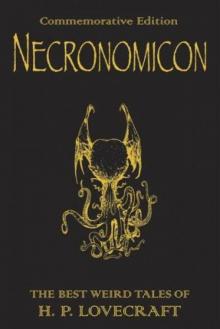 The Definitive H.P. Lovecraft: 67 Tales Of Horror In One Volume
The Definitive H.P. Lovecraft: 67 Tales Of Horror In One Volume The Complete Works of H.P. Lovecraft
The Complete Works of H.P. Lovecraft Other Gods and More Unearthly Tales
Other Gods and More Unearthly Tales Lovecraft's Fiction Volume I, 1905-1925
Lovecraft's Fiction Volume I, 1905-1925 The Shadow Out of Time
The Shadow Out of Time The Shunned House
The Shunned House Lovecraft's Fiction Volume II, 1926-1928
Lovecraft's Fiction Volume II, 1926-1928 The Thing on the Doorstep and Other Weird Stories
The Thing on the Doorstep and Other Weird Stories Dream Cycle of H. P. Lovecraft: Dreams of Terror and Death
Dream Cycle of H. P. Lovecraft: Dreams of Terror and Death Great Tales of Horror
Great Tales of Horror Shadows of Death
Shadows of Death Delphi Complete Works of H. P. Lovecraft (Illustrated)
Delphi Complete Works of H. P. Lovecraft (Illustrated) Waking Up Screaming: Haunting Tales of Terror
Waking Up Screaming: Haunting Tales of Terror H.P. Lovecraft Goes to the Movies
H.P. Lovecraft Goes to the Movies The Road to Madness
The Road to Madness The Complete H.P. Lovecraft Reader (68 Stories)
The Complete H.P. Lovecraft Reader (68 Stories) The Horror in the Museum
The Horror in the Museum Collected Fiction Volume 1 (1905-1925): A Variorum Edition
Collected Fiction Volume 1 (1905-1925): A Variorum Edition Lovecrafts_Fiction, vol.I_1905-1925
Lovecrafts_Fiction, vol.I_1905-1925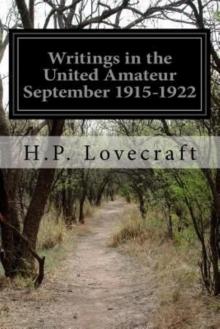 Writings in the United Amateur, 1915-1922
Writings in the United Amateur, 1915-1922 H.P. Lovecraft: The Complete Works
H.P. Lovecraft: The Complete Works Collected Fiction Volume 3 (1931-1936): A Variorum Edition
Collected Fiction Volume 3 (1931-1936): A Variorum Edition H.P. Lovecraft: The Complete Fiction
H.P. Lovecraft: The Complete Fiction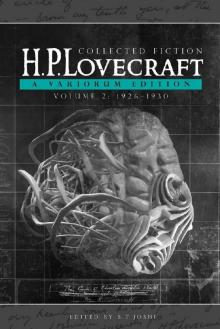 Collected Fiction Volume 2 (1926-1930): A Variorum Edition
Collected Fiction Volume 2 (1926-1930): A Variorum Edition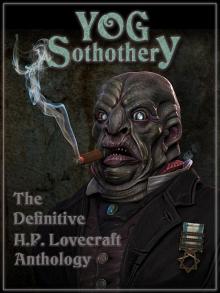 Yog Sothothery - The Definitive H.P. Lovecraft Anthology
Yog Sothothery - The Definitive H.P. Lovecraft Anthology The Complete H.P. Lovecraft Collection (Xist Classics)
The Complete H.P. Lovecraft Collection (Xist Classics)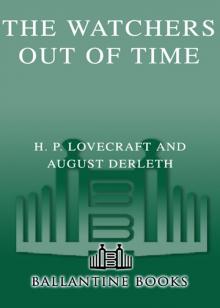 The Watchers Out of Time
The Watchers Out of Time Eldritch Tales
Eldritch Tales The Other Gods And More Unearthly Tales
The Other Gods And More Unearthly Tales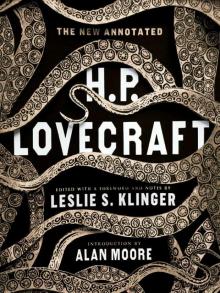 The New Annotated H. P. Lovecraft
The New Annotated H. P. Lovecraft At the mountains of madness
At the mountains of madness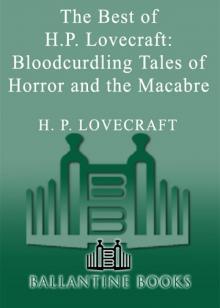 Bloodcurdling Tales of Horror and the Macabre
Bloodcurdling Tales of Horror and the Macabre Fossil Lake II: The Refossiling
Fossil Lake II: The Refossiling Shadows of Carcosa: Tales of Cosmic Horror by Lovecraft, Chambers, Machen, Poe, and Other Masters of the Weird
Shadows of Carcosa: Tales of Cosmic Horror by Lovecraft, Chambers, Machen, Poe, and Other Masters of the Weird H. P. Lovecraft
H. P. Lovecraft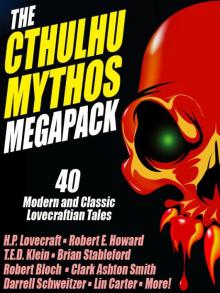 The Cthulhu Mythos Megapack
The Cthulhu Mythos Megapack The Complete H. P. Lovecraft Reader (2nd Edition)
The Complete H. P. Lovecraft Reader (2nd Edition) The Complete Fiction
The Complete Fiction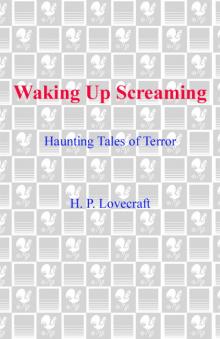 Waking Up Screaming
Waking Up Screaming Transition of H. P. Lovecraft
Transition of H. P. Lovecraft![[1935] The Shadow Out of Time Read online](http://i1.bookreadfree.com/i2/04/12/1935_the_shadow_out_of_time_preview.jpg) [1935] The Shadow Out of Time
[1935] The Shadow Out of Time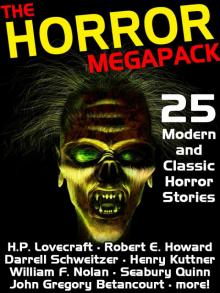 The Horror Megapack
The Horror Megapack